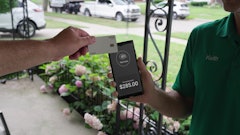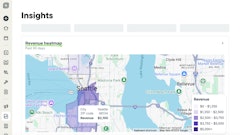
There’s been much written about the importance of working "on" your business versus working "in" your business. What does this really mean to the lawn care operator (LCO)? For most of us, out of necessity, we started our lawn care business with one truck. You served as the technician, sales rep, office administrator and, if you have time to think, marketer. This becomes a constant cycle that’s hard to break without a conscious effort to change. Otherwise, you’ve basically just built a job for yourself.
If you’re checking customer messages, returning phone calls, hopping in the truck to get a route done, fixing the broken spreader, you’re working in your business. When you develop strategic plans around how to grow to that second truck and beyond, you’ve now transitioned to working on your business. It’s not as easy as it sounds; however, every lawn care company, regardless of size, should spend time working on their business and then implanting that plan day after day if you’re looking to build a sustainable growing business.
Where do you start? There are a several important topics to build a foundation, specifically, the business plan which includes your marketing, sales and operations is a good start.
Building The Business Plan
First, understand you have a primary service to offer. For most, this is the agronomic maintenance plan, which is the main reason why a prospect becomes a customer. Once that is defined, how many of those customers do you have? What’s the average sq. footage? What is the mix of residential/commercial? (You may want to keep the commercial customers separate.) What is your retention rate? Your basis for the number of customers you’ll begin next year with, should be current number of customers x your retention rate = number of primary renewal customers. This is a good opportunity to understand why you’ve lost customers. What themes can you identify with the cancellations? A certain technician, significant number of callbacks, expectations not me? Diving into this can help you identify a strategy to potentially save these customers and rework your strategy for the next year.
Secondly, how do you want to grow in one year? For starters, do you have a full truck of revenue, meaning is there enough work for one technician to do in a day, every day, to complete a round of services before it’s time for the next? Work on filling one truck, then the second and so forth.
How many maintenance plan customers can you reasonably bring on in one selling season? In addition, which renewal add-on services do you offer or should you consider offering? With all these questions answered, you now have a basis for a plan and vision for what next year can bring.
Marketing Plan
There are many aspects of marketing that are quite often overlooked as lawn care companies begin their operations. The most common is understanding how to develop a branding strategy for your business and truly stand out from the competition. While this is a long-range strategy rather than one you should rework every year, your differentiation is the reason a customer buys from you in the first place. This needs to be understood and implemented every day, all the time, by every member of your team. That’s how your build brand equity. At a basic level, what’s the one thing your company will do better than anyone else? Second, identify who are your three main competitors? How do they market themselves? Who are their ideal customers? What do their website, social posts, brochures and trucks say? What is their reputation? Lay that out, side by side, now insert your company. Does it look the same? Use the same superlatives? What can you do to differentiate your company so that you stand out from these three competitors?
While branding strategy is long term, other aspects of marketing are more short term. For example, based upon your business plan, how will you add new customers? What tactics will you use? Based upon the marketing tactics, what is the typical close rate for those generated leads? Now you’re building out a plan to grow your business and understand what’s needed to get there.
Operational Plan
How much revenue can one technician do in a day? Figure in route density, technician efficiency and fatigue and plan for a rain day weekly. The more realistic your plan is, the less you’ll have to rework it throughout the year. Based upon your numbers, when do you need to begin planning to hire another technician, either full time or part time?
Sales Plan
Similar to the marketing and operational plans, your sales plan will determine how many sales you’ll generate from your leads. Are you tracking your lead sources and closed sales? This can help you determine the best return on investment for your marketing dollars. The sales plan should also track your renewable add-on services as well to get a complete picture of your revenue.
Putting It All Together
While there’s a lot of questions to answer as you plan for next year, the fact that you’ve spent time thinking these key areas of your business through, you’re already on your way from standing out from the crowd. Keep in mind, once you write your plan, it’s not something to get stored away and pull it out a year later. The purpose of planning is to provide a road map to guide your day-to-day operations. Should something unplanned happen, and it will, you should update your plan and adjust your resources accordingly.
Understand this planning does take a considerable about of time, but as you’ll see, it’s worthwhile. If you consider the alternative of constantly running to put out the next fire, you now understand the value of working on your business versus working in your business.
















![Gravely Pro Turn Mach One My23 Dsc03139 Edit 1200x800 5b2df79[1]](https://img.greenindustrypros.com/mindful/acbm/workspaces/default/uploads/2025/10/gravely-pro-turn-mach-one-my23-dsc03139-edit-1200x800-5b2df791.BucBnDoN22.jpg?ar=16%3A9&auto=format%2Ccompress&fit=crop&h=135&q=70&w=240)


